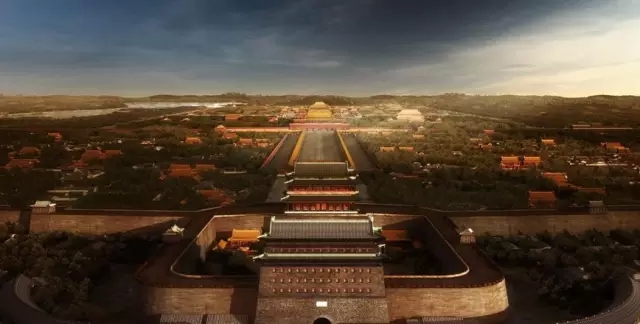


(File photo)
BEIJING, Sept. 27 (Xinhua) -- By 2020, the size of resident population in Beijing should be under 23 million and kept at this level thereafter, according to a city planning document for Beijing issued by China's central authorities.
Moreover, construction land in the city should be reduced to about 2,860 square km by 2020 and to 2,760 square km by 2035, the document said.
According to statistics earlier this year, the number of Beijing's permanent residents, holders of Beijing residence certificates, grew marginally by 0.1 percent to 21.7 million in 2016.
The Communist Party of China (CPC) Central Committee and the State Council have approved the general city plan for Beijing for the period between 2016 and 2035, submitted by the CPC Beijing Municipal Committee and Beijing municipal government.
The approval was made public on Wednesday.
The document said the environmental and resource capacity should be primarily considered during the city planning and measures should be taken to reduce the stress on the city. Water resources will be strictly managed.
The document said the control of population and construction expansion will spur the city to transform its development mode, upgrade and transform industries, and optimize and adjust its city functions.
Also, the height of the buildings in the city center should be controlled, the document said.
According to the plan, Beijing will establish systems of precaution against fire, flood and earthquake and improve risk prevention and control, natural disaster relief, emergency response and crisis management to ensure a safer life for people in the city.
Noting that Beijing is a center of politics, culture, international exchanges and scientific and technological innovation, the document stressed security of the city to ensure a good environment for the work of central authorities.
More land will be made available for residences, for both rental and purchase, and a long-term mechanism will ensure a healthy real estate market.
Efforts will be made to improve utilization of industrial land as production space in the city will be cut to balance space for production, living and nature.
Priority should be given to protection of the environment, with accelerated ecological restoration, an end to illegal occupation of land in mountain areas, and increased forested areas on the plains.
"Non-capital functions" of Beijing will be gradually removed. As part of the integrated development of the Beijing-Tianjin-Hebei region, Beijing is redeveloping Tongzhou District into a subsidiary administrative center and Xiongan New Area in Hebei Province will absorb some "non-capital functions" from Beijing.
The city's cultural heritage should be preserved, covering the whole municipality of Beijing, as well as the Beijing-Tianjin-Hebei area to illustrate the historical and cultural value of Beijing, while characterizing its style as the capital, its charm as the ancient capital and its modern features.
The urban design should be better managed with more public space, while maintaining the keynote and diversity of urban architecture.
Beijing should cooperate with and support the construction of Xiongan New Area in Hebei, with an efficient traffic network, transfer of resources from Beijing's Zhongguancun area to Xiongan, and sharing of public services.
The document required strict implementation of the plan and no department or individual is allowed to alter the plan arbitrarily.
Any major issue in implementation should be reported to the CPC Central Committee and the State Council in a timely manner, it added.
 Fire brigade in Shanghai holds group wedding
Fire brigade in Shanghai holds group wedding Tourists enjoy ice sculptures in Datan Town, north China
Tourists enjoy ice sculptures in Datan Town, north China Sunset scenery of Dayan Pagoda in Xi'an
Sunset scenery of Dayan Pagoda in Xi'an Tourists have fun at scenic spot in Nanlong Town, NW China
Tourists have fun at scenic spot in Nanlong Town, NW China Harbin attracts tourists by making best use of ice in winter
Harbin attracts tourists by making best use of ice in winter In pics: FIS Alpine Ski Women's World Cup Slalom
In pics: FIS Alpine Ski Women's World Cup Slalom Black-necked cranes rest at reservoir in Lhunzhub County, Lhasa
Black-necked cranes rest at reservoir in Lhunzhub County, Lhasa China's FAST telescope will be available to foreign scientists in April
China's FAST telescope will be available to foreign scientists in April "She power" plays indispensable role in poverty alleviation
"She power" plays indispensable role in poverty alleviation Top 10 world news events of People's Daily in 2020
Top 10 world news events of People's Daily in 2020 Top 10 China news events of People's Daily in 2020
Top 10 China news events of People's Daily in 2020 Top 10 media buzzwords of 2020
Top 10 media buzzwords of 2020 Year-ender:10 major tourism stories of 2020
Year-ender:10 major tourism stories of 2020 No interference in Venezuelan issues
No interference in Venezuelan issues
 Biz prepares for trade spat
Biz prepares for trade spat
 Broadcasting Continent
Broadcasting Continent Australia wins Chinese CEOs as US loses
Australia wins Chinese CEOs as US loses